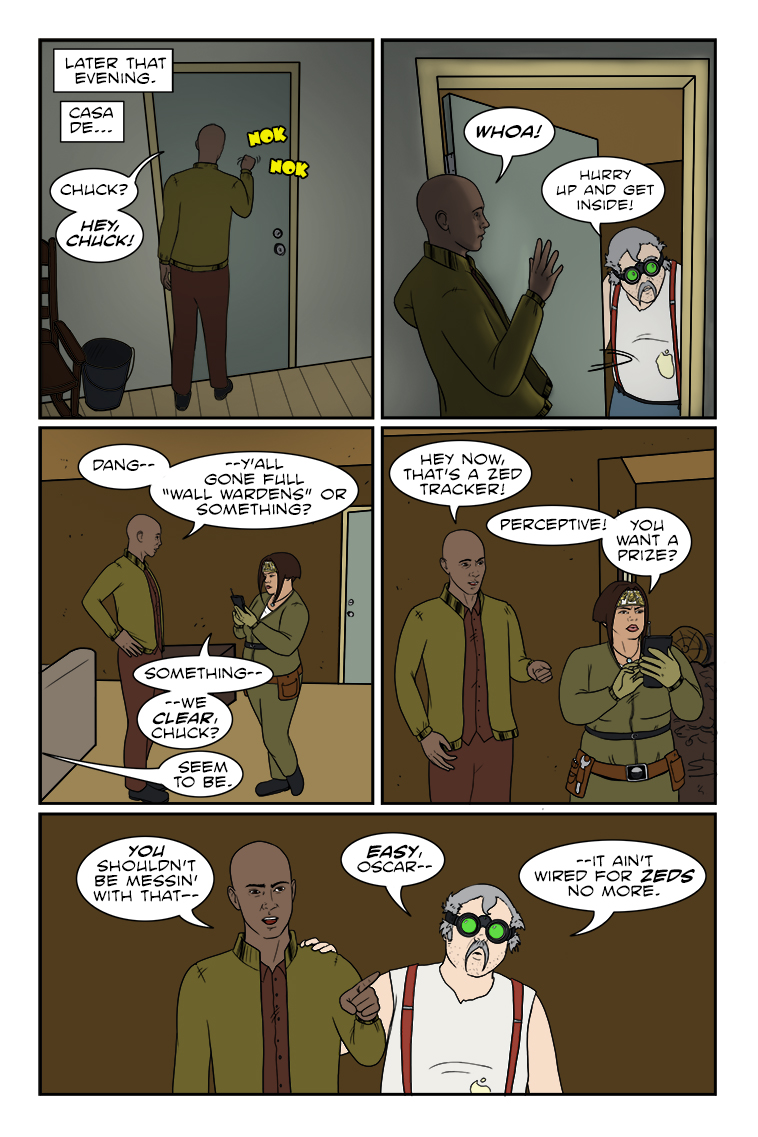Cart
Product categories
Support Us!
If you like what I do please support us on Ko-fi or Patreon.
Follow Us!
Join Our Newsletter!
Vote For Us!
Login
Polls
Events
-
Pasadena Comic Con
Dates: Jan 26
Location: Pasadena Convention Center, 300 E Green St, Pasadena, CA 91101, USA ( MAP)Details:We will be at the Pasadena Comic Con on January 26th. See some of you there for this one day event!
Purchase tickets online at here: https://www.tixr.com/groups/pcc/events/pasadenacomiccon-pasadena-comic-con-2025-115248









3 thoughts on “536 – Great State Of Tech Sass”
Anonymous
Amusing spam above … Things are about to get weird with Casa De Chuck!
Dawn
Ugh, I try to get to the SPAM quicker but we have a new kitty and I have been distracted. It is gone now. 😀
Anonymous
New kitty tops spam any day … and I enjoy getting to see it in it’s brief lifespan.
Latest Comics
#17. 16 – A La Cart
44 Jan 27, 2010
#16. 15 – All Good
43 Jan 20, 2010
#15. 14 – Busted
42 Jan 13, 2010
#14. 13 – First Impressions
40 Jan 06, 2010
#13. 12 – Warning Signs
46 Dec 23, 2009
#12. 11 – Nuthin’ But Meat
48 Dec 09, 2009
#11. 10 – Ornery Critters
42 Dec 02, 2009
#10. 09 – Runt Of The Litter
39 Nov 25, 2009
#9. 08 – What A Drag
45 Nov 18, 2009
#8. 07 – Off He Goes
45 Nov 11, 2009
#7. 06 – Don’t Hurt Them Much
41 Nov 04, 2009
#6. 05 – He’s Got Fire
47 Oct 28, 2009
#5. 04 – Mornin’ of the Dead
45 Oct 21, 2009
#4. 03 – A Not-so-pale Horse
53 Oct 14, 2009
#3. 02 – Saddle Up!
47 Oct 07, 2009
#2. 01 – Lights! Camera! Action!
71 Oct 02, 2009
#1. EPISODE ONE
47 Sep 24, 2009
Latest Chapters
Episode 22
Episode 21
Episode 20
Episode 19
Episode 18
Episode 17
536 – Great State Of Tech Sass
Welcome to Team Paranoid, Oscar! Spoiler alert: they really are out to getcha!
Next comic page planned for Nov. 20th. In the meantime, please accept this documentary evidence of new kitten Morgoth as he discovers the enigma that is the empty soda box.
Ancestry of the “long form”: the serial thrillers
“It makes me wonder, on nearly every page, what’s going to happen next.
Simple as that. A little thing, really. And yet, in the end, it’s everything.”
It’s absolutely true to point out, and from day 1 of Zombie Ranch I’ve always tried to achieve that goal. But as with all “simple” aspects of the creative arts, it’s not quite as easy as it sounds. Zombie Ranch, and the comic McCloud specifically singled out, The Lay of the Lacrymer, both belong to a category of webcomics known as “long form”. The definition of this category can get fuzzy — you could argue the term comes from the fact that you’d usually need to scroll your browser window in order to read it, as opposed to a “strip” webcomic like PVP that fits neatly into a standard screen resolution (this, of course, predates the explosion of mobile devices). You could also argue that it represents a webcomic dedicated to a longer, more dramatic story continuity rather than getting to comedy punchlines. Either way, there’s a lot of bleedover since PVP has had ongoing storylines, and Questionable Content often ends on a punchline even though you’ve got to travel downwards to get there. If you held a gun to my head and asked me to define it, then I suppose I’d say that at its core, the long form webcomic is definitely more dependent on “What happens next?”, no matter what actual structure it takes. Rather than being a self-contained chuckle, like Lucy convincing Charlie Brown to once again make a doomed run at the football, the long form wants to pull the reader along to the future, to thinking beyond the immediate. And that’s where it starts to get complicated, because long form webcomics also tend to have a slower update schedule. That means you not only want to keep luring the reader along with the promise of more, but you also want to balance that with enough immediate satisfaction to tide them over until next time. Even with a non-strip format that allows for more than three or four small panels at a time, that’s not an easy tightrope to walk. It’s a special style of storytelling you can’t learn from reading standard print comics (which have several immediate pages to spread the tale across) or gag-a-day offerings (which often don’t need to bother with long-term continuity). Where do you find inspiration, beyond that of the last ten years or so? What ‘masters’ can you study, the way humor strip authors can pore over the works of a Schulz, Kelly, or Watterson? The answer suddenly came to me, and oddly enough it was courtesy of all the parts of the newspaper comics page I ignored and skipped over when I was a little kid. The long form community does have its legacy, its ancestry, and its masters of the art. Hearken back, friends and neighbors, and remember (or perhaps, if you’re young enough, be introduced to!) the dramatic serial.Calendar
Writer’s Blog Archives